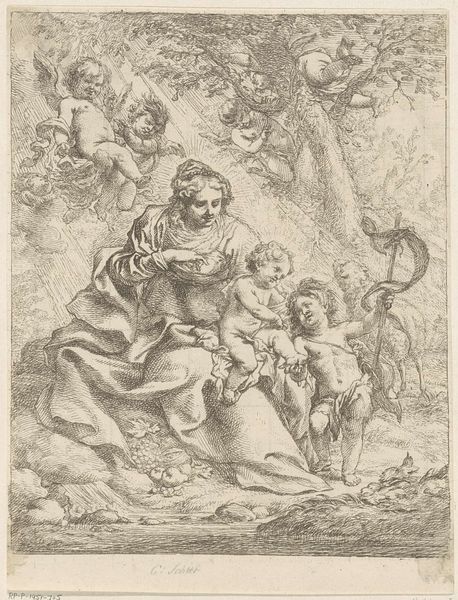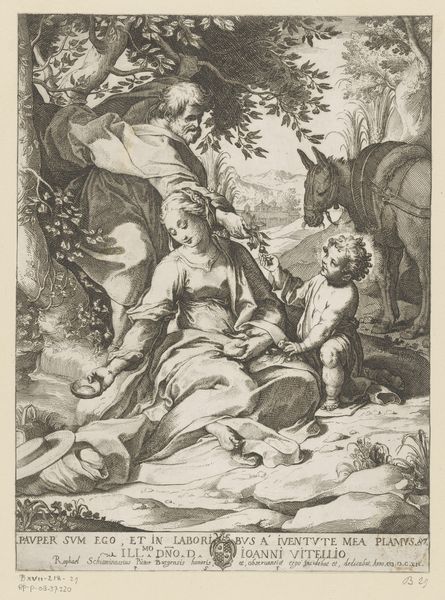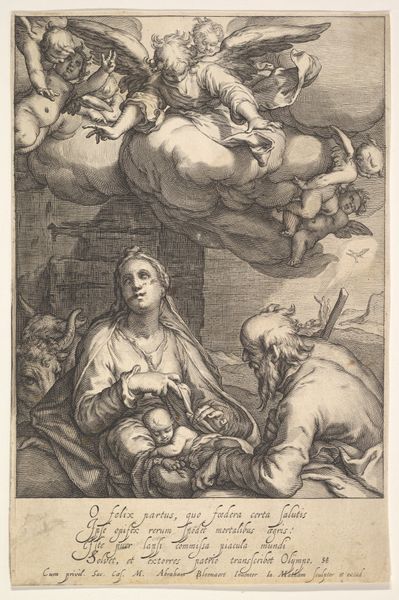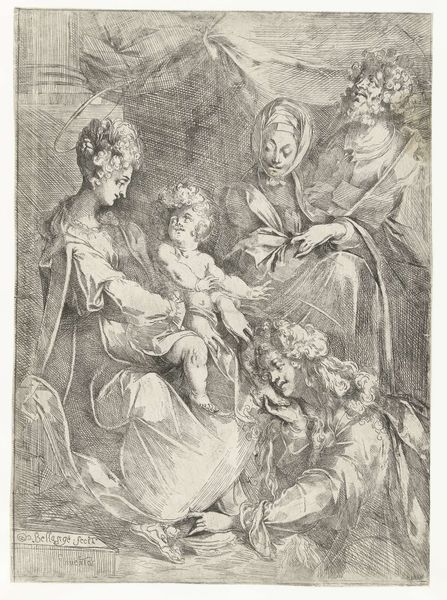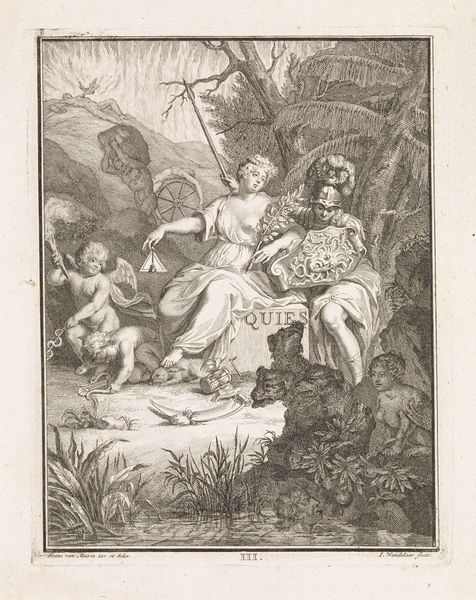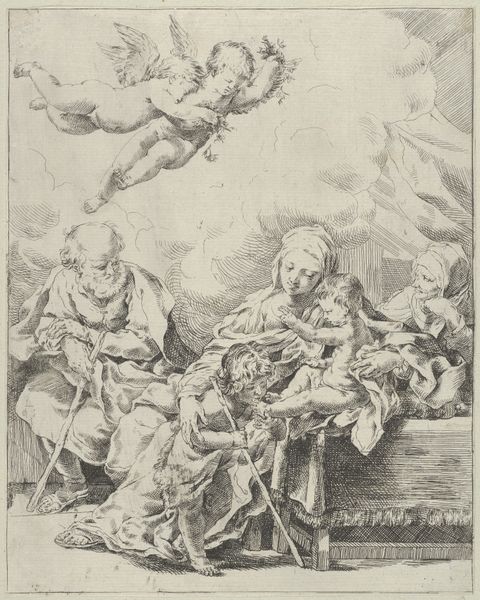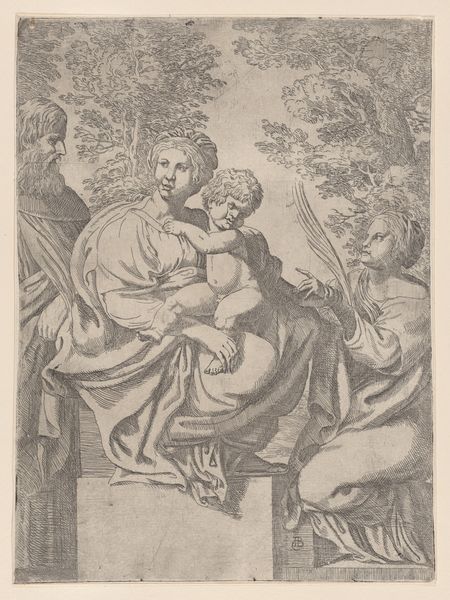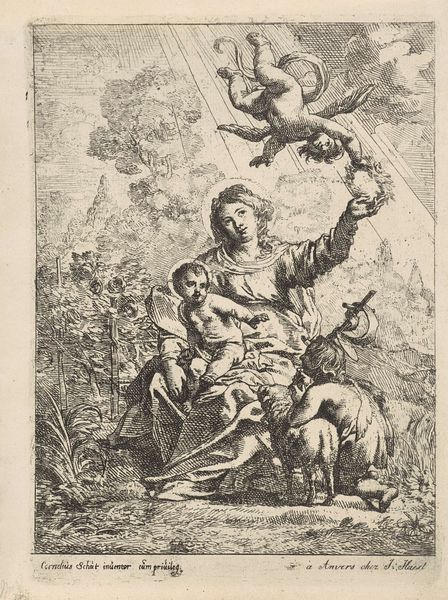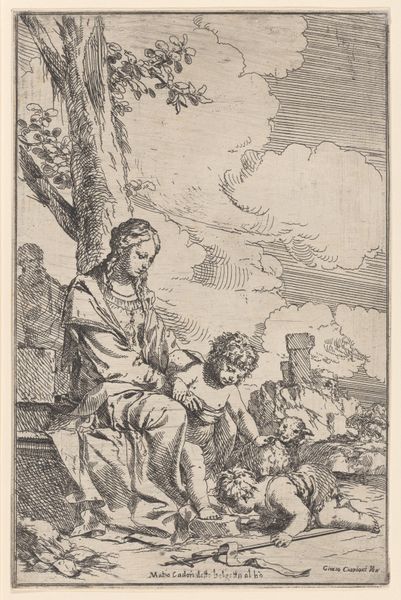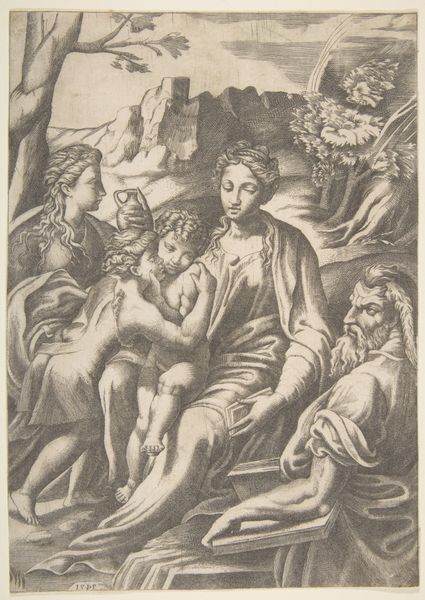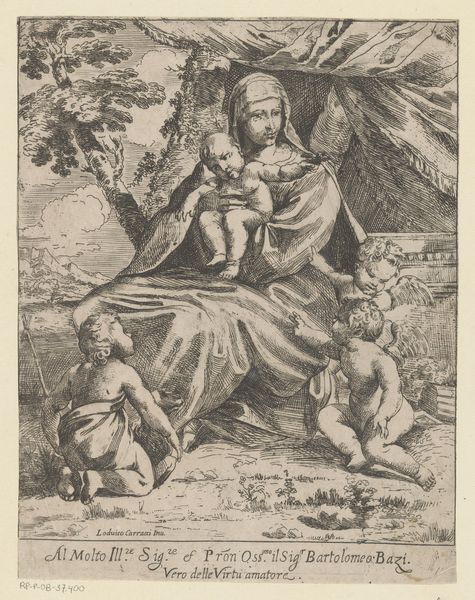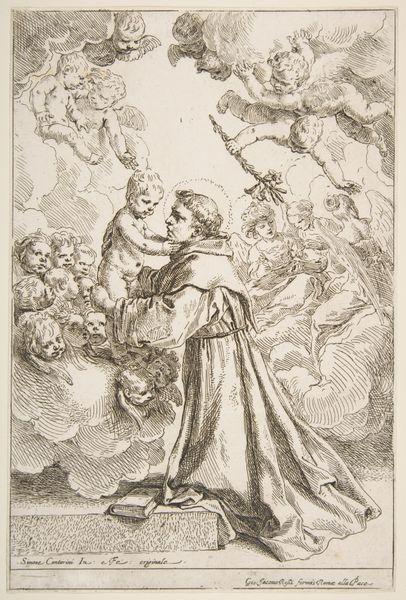
print, etching
#
portrait
#
baroque
# print
#
etching
#
landscape
Dimensions: height 289 mm, width 211 mm
Copyright: Rijks Museum: Open Domain
Editor: This etching, "Madonna met kind en Johannes de Doper in een landschap," was created sometime between 1618 and 1655 by Cornelis Schut. There's something so tender and serene about this scene. With all those angels peeking out! How do you interpret this work, considering its Baroque style and religious subject matter? Curator: It's funny you say "tender", because that's precisely where my mind wanders. This image whispers of maternal affection. Look how the figures huddle close – that bond is palpable, isn’t it? Baroque art often went big and boisterous, but Schut offers us a quieter devotion. A little world of familial love framed by landscape... Makes you wonder, doesn't it, about the artist's own inner world? Was he drawing on some deeply personal sentiment, something ordinary yet sublime? Editor: I never really considered it from the artist's personal life - that is beautiful and interesting! You know, how you see this everyday intimacy within the grandeur of the Baroque period. Curator: Exactly. Etching, too, is an interesting choice. A reproductive medium that lends itself to nuanced light and shadow, it is capable of capturing emotion at scale for popular access. This could also signify Schut's statement about reaching the public. So perhaps Schut, using this technology of the time, wanted to reflect on the value of human connection and touch the souls of those who, like us, appreciate the little details that mean everything. It's an exercise in humanity and maybe Schut felt a yearning to share these vulnerable feelings and immortalize them for everyone. Editor: So, the etching makes this moment – that tenderness - something accessible and universal. Curator: Precisely. In this single black and white picture, Schut has gifted us a world. Editor: I’ll definitely think about it that way from now on, thinking not only about the technical aspects and its style but how it expresses basic human conditions.
Comments
No comments
Be the first to comment and join the conversation on the ultimate creative platform.
